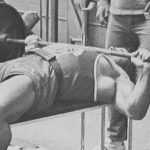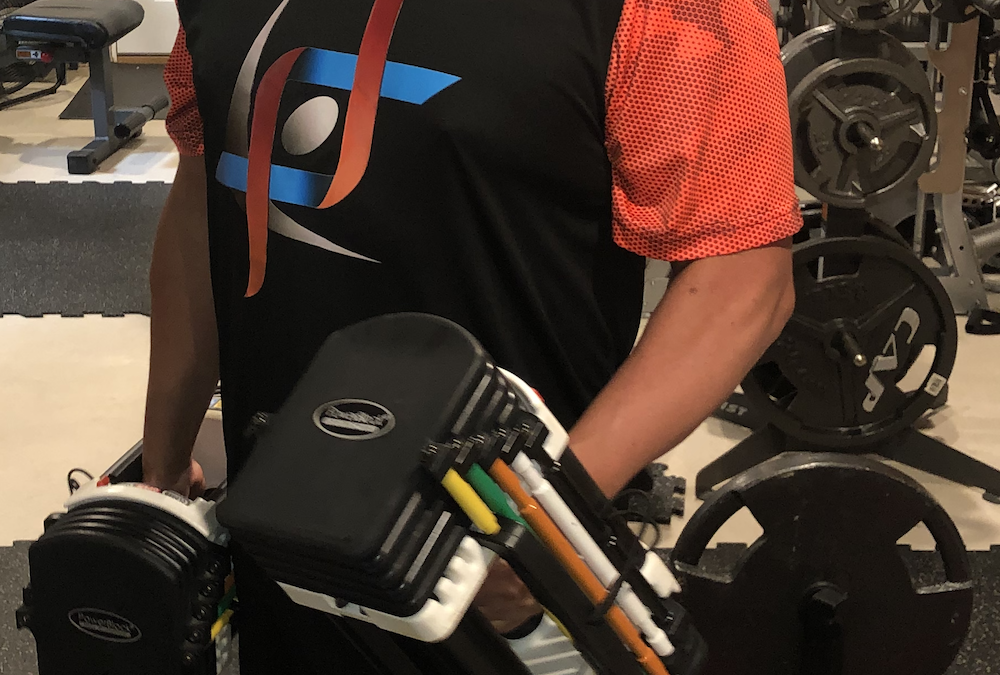The Problem?
Feel bored and plateaued with your results from Exercising? Can’t figure out why you can’t see improvement?
When exercising, turn off the Mind and ‘think with the Body’. Avoid prematurely exhausting the body by intentionally losing track of the effort. Follow this guidance to laser focus on exercise form instead. Avoid artificial goals and witness what your body is truly capable of.
When you train anaerobically you must reach a point of failure on your last few reps. If you don’t, then you are robbing yourself of improvement. (read this post on the SAID principle and tell them David-SAID so)
The body adapts to the changes that it continually encounters, which is called the SAID principle: Specific Adaptations to Imposed Demands.
Training Modes and Rep Count
Anaerobic Training Modes: typically involves training for …
- Muscle Stability
- just getting started
- joint conditioning (youth training; aging gracefully)
- recovering from injury
- Muscle Endurance
- overall muscle tone and visual appeal
- conditioning for certain activities (sports, hobbies)
- Muscle Growth
- Muscle Strength
- Overall Power (including Speed, Agility, Quickness)
If you establish a repetition count before you start the exercise, your mind will naturally pick a “premature quitting point”. However, you must have some sense of your rep count, or you won’t exercise in the proper mode (anaerobic training modes require different rep counts and durations in-effort).
So what should you do, to get your mind properly set for the exercise?
Many aspects of life were built upon Three (key events and transitions). The mind can grasp intervals of 3 quite easily. Life evolves through Storylines and when we write our stories (for later recall), we most often use the Rule of Three.
This odd number keeps your physical effort level high and your mental commitment equally high.
- One -> Here we go [again]
- Two -> This feels good
- Three -> Good job, another section of work complete
A brief pause is the trick … now repeat
After count three, the Mind resets, assessing its ability to keep going, which has a huge effect on the Body’s readying for another section of work. While the mind is considering whether to keep going, the Body is allowed to override any mental doubt, sending a signal to the brain of “yes, you CAN keep going”.
What a clever trick we’re setting up, allowing the Body a moment to [properly] override the Mind. The Mind is always the first to quit. We want to ensure that the Mind receives an official signal of muscle failure, ‘from the Body’, rather than within the mind itself.
So many variables can cause a false signal, solely within the mind, telling us to quit. Lack of sleep the prior night. A tough day at work. Thinking about things you must do tomorrow. On and on …
The body knows best whether it can continue. We are finding a way to listen to it. Silencing the mind is the key.
Have an over active mind, or find your self still counting?
A variation that I much prefer, just stop counting completely by saying to yourself:
- “Start”(and think … how’s the form?)
- “Half Way” (and think, you got this)
- “Finish [strong]” (and think, how’d that feel? Pause, check the involved joints and starting position…)

Over Training Risk?
Won’t I risk injury by not counting and pushing myself too far?
The truth about energy reserves and consumption, during short burst exercise …
Within a 90 second burst of effort expenditure, we are pulling energy straight from the ATP\aDp energy cycle (Learn about ATP here). This type of energy draw is stored within and drawn locally from the activated muscles. Energy is not drawn from Oxygen intake. It may seem like as you lose breath, you lose energy and strength. The cause of energy degrade is not due to Oxygen however. It is due to depletion of ATP (and Lactic Acid). Each person has a similar cycle of ATP energy available to them.
So, by counting in 3s, we take our mind off our breathing and stop tracking time as well. We won’t run out of breath in 90 seconds, so no point focusing on the breath (excessively). We also know roughly how long we’ll be IN the exercise, so let’s not focus [excessively] on time elapse. A 12 rep effort with 5-7 seconds per rep [4-2-1] (insert article here) will require approximately 60 to 90 seconds, between the time we start and return to a resting position.

No, I’m not suggesting that you hold your breath or that focused and metered breathing isn’t still important. I am saying that we tend to psyche our self out by over focusing on breathing [technique].
I’ve witnessed countless people start breathing excessively and quickly, prior to starting a set. They are burning off energy and Mentally trumping their body, causing them to quit before they even started.
I’m also talking about the average person, not the meat head who is getting psyched up for an attempt at 1 rep of maximum weight on the bench press – which is an entirely different topic and a category of training I do not cater to nor do I promote.
Breathing Technique paired with 4-2-1 Tempo
4 second “negative” during the Stretch part of any movement: breath IN
2 second “positive” during Contraction (resisting gravity, muscles PULLing on bone): breath OUT slowly
1 second “pause” in movement to avoid sudden change in direction between + and – movements which is most common cause of injuries. Don’t breath IN or OUT … just relax your lungs during this brief pause.
A prolonged breathing in (intake of Oxygen) promotes regeneration of oxygenated blood into the most Active muscle group being asked to “do work”. Additionally, the negative part of any movement will focus on stabilizing the movement and re training the muscle group how to move properly, which will aid in removal of malformed moving patterns. Pairing this technique with Fitness Compassion guidance on Warming Up, Stretching, and muscle Adhesion removal, your body learns at an accelerated pace, how to move properly once again, even if you’ve had bad posture and habits for many years. Additionally, a longer muscle has potential to be fuller, bigger, and better defined.
The pause ensures you avoid other bad habits, like bouncing and redirecting the energy to [subconciously] avoid doing the real work of Starting the movement of a Contraction. Ever see someone with notches and crunched-up biceps? That’s someone who hasn’t learned to Pause and fully work the Range of Motion (RoM).
The 2 second positive moving contraction is the natural result of lifting weight appropriate for muscle development. It should take about 2 seconds to properly contract the muscle group through the RoM. If it takes longer, the weight is more appropriate for Strength and Power lifting (picture someone struggling on their 1st and only 1-rep max out). If it takes only a fraction of a second to lift, you’re doing Aerobic work and not Anaerobic exercise. Aerobic work may stimulate the Cardiovascular system, but it would NOT challenge the muscle group enough to recondition it and stimulate growth (picture someone curling light dumbbells during a 20 min casual walk on a treadmill).
Feedback
So, what to focus on instead? Focus on internal feedback from the body, during each rep (insert article on feedback during/after). To avoid predicting the next rep and over focus on the total rep count, counting in 3s keeps us focused on the movement and internal feedback instead.
Here’s the cool thing. We intentionally lose track of the total rep count. Instead, you only track the number of sections (of 3).
1-2-3
2-2-3
3-2-3
4-2-3
5-2-3?
Yes, you could mentally still track. 5 x 3 = ? But why turn it into algebra?
Instead, observe the clock when you start and stop. Did 60 to 90 seconds go by? Did you hold to the exercise form and pace of 4-2-1? Then odds are good that you did 3 or 4 sections of 3, or 12 reps.
What if I completely lose track within the set?!
Concerned about losing track withIN a section of work (counting up to 3)? All the better! Just start over at count ONE. Those who do the most work in proper form, make the best improvement in conditioning. LOL
Quiz time: if you’re training for muscle growth, 9 is the target total rep count. You should be done in ___ seconds?
9×7=63 (about 1 minute)
Now watch this video but MUTE the sound intentionally. I will do 9 to 12 reps (dumbbell bench press), the same rep count as the audio example below.
Notice you you anticipate reaching 9, around the count of 6 or 7, and then again around 10 in route to count 12? This is the mind, ABOUT TO give up on the body. “You should be just about done by now, based on COUNT alone!”. You are just Watching the video and the mind is trying to quit. Imagine if you were DOING this exercise, just how ready the mind is to quit!
Watch the video a 2nd time with the sound ON. Notice how you lose track of the count? Notice how you focus on the form of the movement more so?
Now listen to this sound clip below (me coaching the exercise above) and prove to your mind that you CAN trump its ability to keep track of the Count! This illustrates the 4-2-1 Tempo for Muscle Conditioning and Growth. Try THIS exercise while playing this audio clip of me coaching you. FEEL the difference!?
Okay, but HOW do I keep track of Time IN exercise versus while resting? Simple, use the StopWatch app on your mobile phone! Here’s an example:
See the trick in action?
Body over mind
This allows your body to trump your mind, by focusing on each rep instead. We are sure you’ll also find, that this helps to clear your mind during your workout. You may be amazed how much energy you reclaim, by being Present during your workout.
You can pay the bills after the workout. You can ask a boss for a raise tomorrow. None of that is relevant during your workout.
Don’t let imagination ruin your exercise and care for your body. Memories and Worries (of the future) are imagination. You are trying to exercise your body, not your mind. When you feel rushed to ‘be done’, so you can continue your mind’s priorities, you give up prematurely on the built-in energy cycles within your Body.
Don’t rob yourself, of a healthier you! When you enter exercise mode, turn off the Mind and ‘think with the Body’.
Use these techniques. Leverage Fitness Compassion coaching to help you form good habits and recognize when you are not Present in your workouts.

